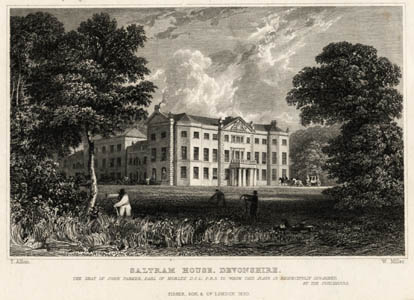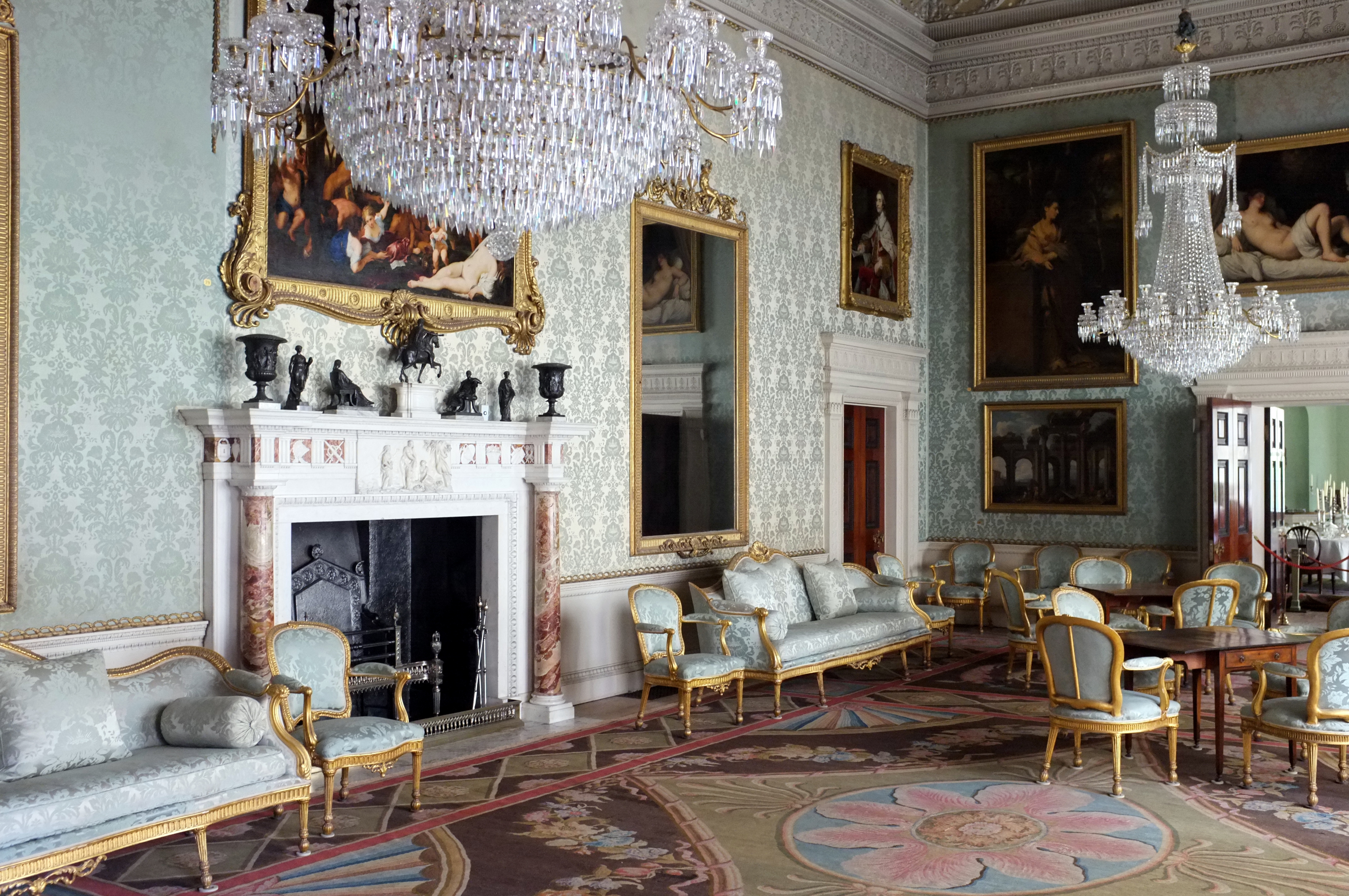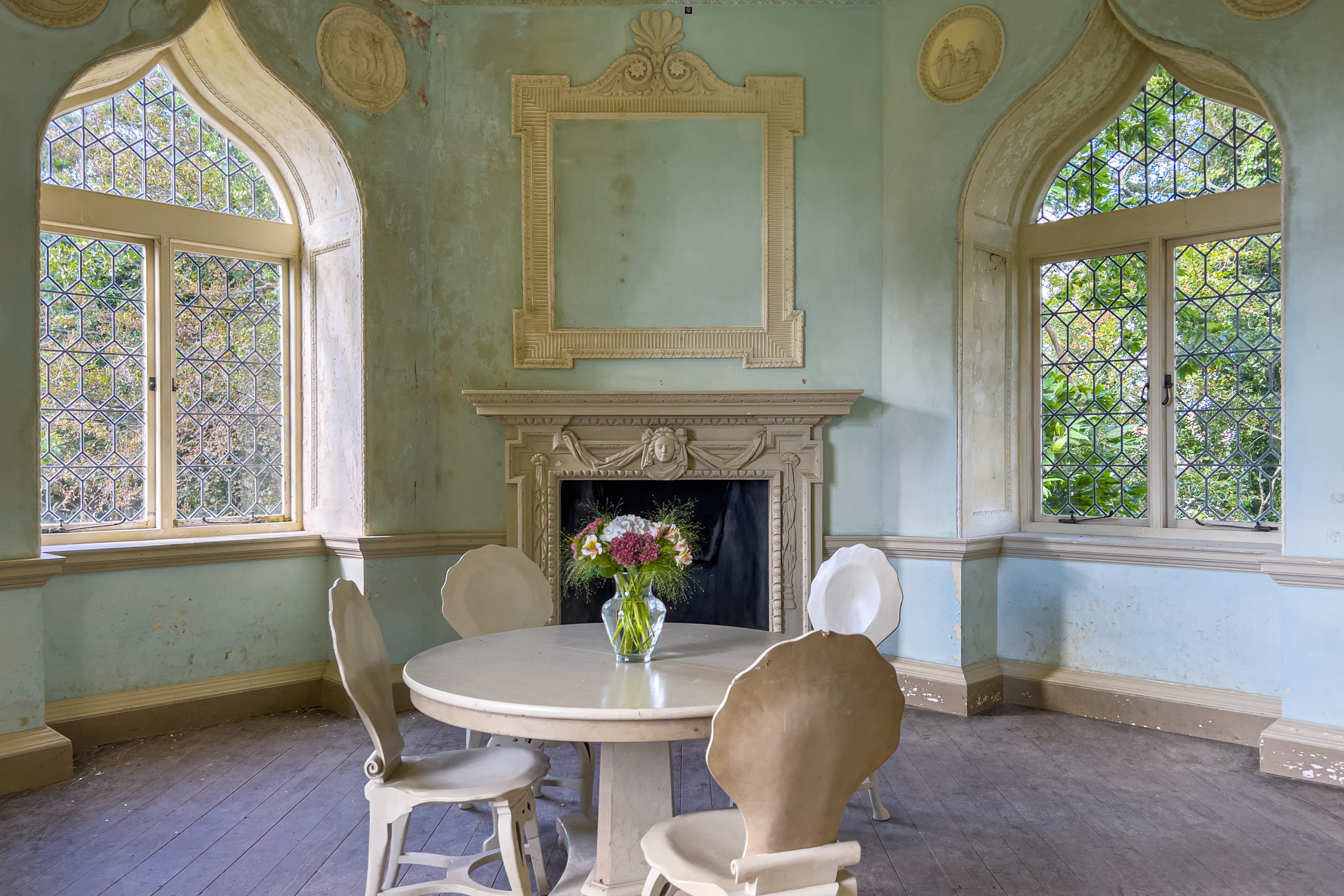Saltram House 2008.jpg on:
[Wikipedia]
[Google]
[Amazon]





 Saltram House is a grade I listed
Saltram House is a grade I listed
Saltram information at the National Trust
Gardens in Devon Grade I listed buildings in Devon Grade I listed houses Country houses in Devon National Trust properties in Devon Museums in Plymouth, Devon Robert Adam buildings Historic house museums in Devon





 Saltram House is a grade I listed
Saltram House is a grade I listed George II George II or 2 may refer to:
People
* George II of Antioch (seventh century AD)
* George II of Armenia (late ninth century)
* George II of Abkhazia (916–960)
* Patriarch George II of Alexandria (1021–1051)
* George II of Georgia (1072–1089) ...
era mansion house located in the parish of Plympton
Plympton is a suburb of the city of Plymouth in Devon, England. It is in origin an ancient stannary town. It was an important trading centre for locally mined tin, and a seaport before the River Plym silted up and trade moved down river to P ...
, near Plymouth in Devon
Devon ( , historically known as Devonshire , ) is a ceremonial and non-metropolitan county in South West England. The most populous settlement in Devon is the city of Plymouth, followed by Devon's county town, the city of Exeter. Devo ...
, England
England is a country that is part of the United Kingdom. It shares land borders with Wales to its west and Scotland to its north. The Irish Sea lies northwest and the Celtic Sea to the southwest. It is separated from continental Europe b ...
. It was deemed by the architectural critic Pevsner Pevsner or Pevzner is a Jewish surname. Notable people with the surname include:
* Aihud Pevsner (1925–2018), American physicist
* Antoine Pevsner (1886–1962), Russian sculptor, brother of Naum Gabo
* David Pevsner, American actor, singer, da ...
to be "the most impressive country house in Devon". The house was designed by the architect Robert Adam
Robert Adam (3 July 17283 March 1792) was a British neoclassical architect, interior designer and furniture designer. He was the son of William Adam (1689–1748), Scotland's foremost architect of the time, and trained under him. With his ...
, who altered and greatly expanded the original Tudor house on two occasions. The drawing room
A drawing room is a room in a house where visitors may be entertained, and an alternative name for a living room. The name is derived from the 16th-century terms withdrawing room and withdrawing chamber, which remained in use through the 17th cent ...
is considered one of Adam's finest interiors. Saltram is one of Britain
Britain most often refers to:
* The United Kingdom, a sovereign state in Europe comprising the island of Great Britain, the north-eastern part of the island of Ireland and many smaller islands
* Great Britain, the largest island in the United King ...
's best preserved examples of an early Georgian house and retains much of its original decor, plasterwork and furnishings. It contains the Parker family's large collection of paintings, including several by Sir Joshua Reynolds (1723-1792), born and educated at Plympton and a friend of the Parker family.
The present building was commenced by John Parker (1703–1768) of nearby Boringdon Hall
Boringdon Hall is a 16th-century Grade I listed manor house in the parish of Colebrook, about two miles north of Plympton, Devon.
Description
The oldest parts of the present house were said by John Britton (1771–1857) to have been built about ...
, Plympton, and of Court House North Molton
North Molton is a village, parish and former manor in North Devon, England. The population of the parish in 2001 was 1,047, decreasing to 721 in the 2011 census. An electoral ward with the same name also exists. The ward population at the ce ...
, both in Devon, together with his wife Catherine Poulett (1706-1758), a daughter of John Poulett, 1st Earl Poulett. It was completed by his son John Parker, 1st Baron Boringdon
John Parker, 1st Baron Boringdon (1735 – 27 April 1788) was a British peer and Member of Parliament.
Origins
Parker was the eldest son of John Parker (1703–1768) of Boringdon Hall, Plympton, and Saltram House, by his wife Catherine Poule ...
(1735-1788), whose son was John Parker, 1st Earl of Morley
John Parker, 1st Earl of Morley FRS (3 May 1772 – 14 March 1840), known as 2nd Baron Boringdon from 1788 to 1815, was a British peer and politician.
Origins
Morley was the only son of John Parker, 1st Baron Boringdon, of Boringdon Hall, P ...
(1772-1840). The Parker family had risen to prominence in the mid-16th century as the bailiff of the manor of North Molton, Devon, under Baron Zouche of Haryngworth.
In 1957 Saltram House was donated by the Parker family to the National Trust
The National Trust, formally the National Trust for Places of Historic Interest or Natural Beauty, is a charity and membership organisation for heritage conservation in England, Wales and Northern Ireland. In Scotland, there is a separate and ...
in lieu of death duties, and is open to the public.
Saltram House was used as one of several local settings for the 1995 film ''Sense and Sensibility
''Sense and Sensibility'' is a novel by Jane Austen, published in 1811. It was published anonymously; ''By A Lady'' appears on the title page where the author's name might have been. It tells the story of the Dashwood sisters, Elinor (age 19) a ...
''.
Etymology
The name Saltram derives itself from the salt that was harvested on the nearby estuary and the fact that a "ham", or homestead, was on the site before the Tudor period.History
The first recorded family to have owned the house is that of Mayhew (''alias'' Mayes, Mayhowes, etc.) who were yeoman farmers in the 16th century. The family owned Saltram for about 50 years, their prosperity declining at the end of the century when they began to sell and lease parts of the estate. Their landholdings were considerable — for example, a lease granted by them in 1588 granted the right to farm in Saltram Wood "and all houses, quays and buildings adjoining or upon the same", and to have fishing rights at Laira Bridge Rock and Culverhole; to hold portions of a quay called Coldharbour; and to have the use of the Mayhowes' fishing nets. The next family to own Saltram were the Baggs, who were probably responsible for turning the farmhouse into a mansion. Sir James I Bagg, MP for Plymouth (1601–11) andMayor of Plymouth
This is a list of some notable mayors and all the later lord mayors of the city of Plymouth in the United Kingdom.
Plymouth had elected a mayor annually since 1439. The city was awarded the dignity of a lord mayoralty by letters patent dat ...
, purchased Saltram in about 1614. On his death the house passed to his son James II Bagg (died 1638), Deputy Governor of Plymouth
The Governor of Plymouth was the military Captain or Governor of the Fortress of Plymouth. The Governorship was abolished in 1842. The Lieutenant Governorship was vested in the General Officer Commanding Western District from 1793 to 1903, an ...
and a vice-admiral closely allied to the Duke of Buckingham, a favourite of King James I. He is believed twice to have embezzled funds from the Crown, the first occasion having contributed to the failure of Buckingham's attack on Cadiz in 1625. For reason unknown King Charles I twice defended him despite his seemingly obvious culpability. James II Bagg died in 1638 and was succeeded by his son George Bagg, when Saltram was described as comprising ''"One great mansion house, one stable, three gardens, two acres of orchard, eight acres of meadows"'' and eight acres more. Despite inheriting his father's role as Deputy Governor of Plymouth
The Governor of Plymouth was the military Captain or Governor of the Fortress of Plymouth. The Governorship was abolished in 1842. The Lieutenant Governorship was vested in the General Officer Commanding Western District from 1793 to 1903, an ...
, George Bagg did not share his father's luck, and having chosen the Royalist side in the Civil War
A civil war or intrastate war is a war between organized groups within the same state (or country).
The aim of one side may be to take control of the country or a region, to achieve independence for a region, or to change government policies ...
, Saltram suffered at the hands of the Parliamentarian forces. Following the defeat of the Royalist cause, shortly after 1643 he was forced to compound
Compound may refer to:
Architecture and built environments
* Compound (enclosure), a cluster of buildings having a shared purpose, usually inside a fence or wall
** Compound (fortification), a version of the above fortified with defensive struc ...
in the sum of £582 to secure his landholdings.
Despite having held on to Saltram through the Civil War, the Baggs lost Saltram in 1660, shortly before the Restoration of the Monarchy when the Commonwealth government transferred it to the former Parliamentarian captain Henry Hatsell in payment of a large debt owed by Bagg. However, after the Restoration of the Monarchy in 1660, Hatsell was stripped of the house and estate which were granted to Sir George Carteret in settlement of a loan he had made to the King during the Civil War.
In 1712 George Parker of Boringdon Hall
Boringdon Hall is a 16th-century Grade I listed manor house in the parish of Colebrook, about two miles north of Plympton, Devon.
Description
The oldest parts of the present house were said by John Britton (1771–1857) to have been built about ...
, about 2 miles north of Saltram, purchased the manor of Saltram, and created the Parker dynasty which reigned over Saltram until its days as a private estate were over.Ceri Johnson/National Trust, "Saltram", National Trust Press, 1998
Development
Inheritance
John Parker inherited the house in 1743 and along with his wealthy wife, Lady Catherine Parker, (who largely funded the remodelling), clothed the building with symmetrical Palladian facades which cover the Tudor origins of the house. The interiors of the house were given delicate touches including Rococo ceiling plasterwork in the Entrance Hall, Morning Room and Velvet Drawing Room. John Parker the second, (Lord Boringdon), succeeded his father in 1768 and a year later married Theresa Robinson. Her husband's interests included drinking and gambling but Theresa, her sister, Alice and her brothers Frederick and Thomas took an interest. They advised on the embellishment of the house via correspondence with Theresa. She is crediited with making Saltram a "showpiece of South West England. The six years until Theresa's tragic early death are considered Saltram's golden age.Ceri Johnson/National Trust, "Saltram", National Trust Press, 1998 The house owns ten portraits by Joshua Reynolds.Robert Adam
Robert Adam (3 July 17283 March 1792) was a British neoclassical architect, interior designer and furniture designer. He was the son of William Adam (1689–1748), Scotland's foremost architect of the time, and trained under him. With his ...
was commissioned in 1768 to create the saloon and the library (The library is now the dining room). Adam, created everything from the door handles to the huge plasterwork ceiling. Thomas Chippendale
Thomas Chippendale (1718–1779) was a cabinet-maker in London, designing furniture in the mid-Georgian, English Rococo, and Neoclassical styles. In 1754 he published a book of his designs in a trade catalogue titled ''The Gentleman and Ca ...
made the furniture and Matthew Boulton
Matthew Boulton (; 3 September 172817 August 1809) was an English manufacturer and business partner of Scottish engineer James Watt. In the final quarter of the 18th century, the partnership installed hundreds of Boulton & Watt steam engin ...
made the four candelabras. She and her husband spent £10,000 on the saloon.
Not to be confined to the inside of the property, Boringdon also commissioned Nathaniel Richmond to lay out the present parkland which surrounds the house.
Decline
The third John Parker, later known as Earl of Morley inherited the house just 20 years after his father and took longer again to make any major changes to the house. However, in 1819 he employed the Regency architect John Foulston to add the Entrance Porch and create the present Library out of two smaller rooms. His second wife, Frances, continued to develop the artistic legacy of the family by producing her own watercolours and Old Master copies which are on show in the house still. The Earl of Morley was ambitious and attempted to develop several industrial and engineering projects on the estate, but many of these were unsuccessful and the family fell heavily into debt.Transference to National Trust
Money was so short that the third Earl of Morley was forced to leave the house between 1861 and 1884, and was only able to return after selling several of the estate's most valuable paintings. The family's fortunes picked up in 1926 when the 4th Earl of Morley inherited several other estates although the good times were short lived as the war brought damage from enemy bombing and eventually in 1951 the house and its contents were accepted in lieu of death duties by H.M. Treasury, which transferred them to the National Trust, which remains in charge to this day.Landscape
The silting up of theLaira
Laira – previously recorded as Lare(1591), Lary poynte (1638), the Leerie (1643), and the Lairy (1802) – was originally the name given to that part of the estuary of the River Plym from the Cattewater up to Marsh Mills in Plymouth, Devon ...
means that once the view to the west was of a muddy estuary for all but the top of the tide, however recent tree growth has created a visually pleasing landscape. The in-filling of the Plymouth refuse dump at Chelson Meadow is now complete, creating green space. Views of Plymouth Sound
Plymouth Sound, or locally just The Sound, is a deep inlet or sound in the English Channel near Plymouth in England.
Description
Its southwest and southeast corners are Penlee Point in Cornwall and Wembury Point in Devon, a distance of abou ...
are possible from the first storey of the house and the castle folly in the gardens.
References
External links
{{Commons category, Saltram HouseSaltram information at the National Trust
Gardens in Devon Grade I listed buildings in Devon Grade I listed houses Country houses in Devon National Trust properties in Devon Museums in Plymouth, Devon Robert Adam buildings Historic house museums in Devon